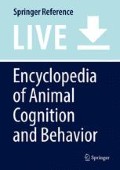References
Abramson, C. I., & Chicas-Mosier, A. M. (2016). Learning in plants: Lessons from Mimosa pudica. Frontiers in Psychology, 7, 417.
Appel, H. M., & Cocroft, R. B. (2014). Plants respond to leaf vibrations caused by insect herbivore chewing. Oecologia, 175, 1257–1266.
Baluška, F., & Mancuso, S. (2016). Vision in plants via plant-specific ocelli? Trends in Plant Science, 21, 727–730.
Baluška, F., Mancuso, S., & Volkmann, D. (Eds.). (2006). Communication in plants: Neuronal aspects of plant life. Berlin: Springer.
Baluška, F., Lev-Yadun, S., & Mancuso, S. (2010). Swarm intelligence in plant roots. Trends in Ecology & Evolution, 25, 682–683.
Böhm, J., Scherzer, S., Krol, E., Kreuzer, I., von Meyer, K., Lorey, C., Mueller, T. D., Shabala, L., Monte, I., Solano, R., Al-Rasheid, K. A., Rennenberg, H., Shabala, S., Neher, E., & Hedrich, R. (2016). The Venus flytrap Dionaea muscipula counts prey-induced action potentials to induce sodium uptake. Current Biology, 26, 286–295.
Bose, J. C. (1926). The nervous mechanism of plants. London: Longmans, Green.
Calvo, P. (2016). The philosophy of plant neurobiology: A manifesto. Synthese, 193, 1323–1343.
Calvo, P., & Friston, K. (2017). Predicting green: Really radical (plant) predictive processing. Journal of the Royal Society Interface, 14, 20170096.
Calvo, P., Baluška, F., & Sims, A. (2016). “Feature detection” vs. “predictive coding” models of plant behavior. Frontiers in Psychology, 7, 1505.
Calvo, P., Sahi, V. P., & Trewavas, A. (2017). Are plants sentient? Plant, Cell & Environment, 40, 2858–2869.
Carello, C., Vaz, D., Blau, J. J. C., & Petrusz, S. C. (2012). Unnerving intelligence. Ecological Psychology, 24, 241–264.
Ciszak, M., Comparini, D., Mazzolai, B., Baluška, F., Arecchi, F. T., Vicsek, T., & Mancuso, S. (2012). Swarming behavior in plant roots. PLoS One, 7, e29759.
Cvrčková, F., Žárský, V., & Markoš, A. (2016). Plant studies may lead us to rethink the concept of behavior. Frontiers in Psychology, 7, 622.
Darwin, C., & Darwin, F. (1880). The power of movement in plants. London: John Murray.
De Kroon, H., Visser, E. J. W., Huber, H., & Hutchings, M. J. (2009). A modular concept of plant foraging behaviour: The interplay between local responses and systemic control. Plant, Cell & Environment, 32, 704–712.
Dicke, M., Agrawal, A. A., & Bruin, J. (2003). Plants talk, but are they deaf? Trends in Plant Science, 8(9), 403–405.
Gagliano, M., Mancuso, S., & Robert, D. (2012). Towards understanding plant bioacoustics. Trends in Plant Science, 17, 323–325.
Gagliano, M., Renton, M., Depczynski, M., & Mancuso, S. (2014). Experience teaches plants to learn faster and forget slower in environments where it matters. Oecologia, 175, 63–72.
Gagliano, M., Vyazovskiy, V. V., Borbély, A. A., Grimonprez, M., & Depczynski, M. (2016). Learning by association in plants. Scientific Reports, 6, 38427.
Gianoli, E., & Carrasco-Urra, F. (2014). Leaf mimicry in a climbing plant protects against herbivory. Current Biology, 24(181), 984–987.
Gorzelak, M. A., Asay, A. K., Pickles, B. J., & Simard, S. W. (2015). Inter-plant communication through mycorrhizal networks mediates complex adaptive behaviour in plant communities. AoB Plants, 7, plv050.
Liu, S., Jiao, J., Lu, T. J., Xu, F., Pickard, B. G., & Genin, G. M. (2017). Arabidopsis leaf trichomes as acoustic antennae. Biophysical Journal, 113, 2068–2076.
Novoplansky, A. (2016). Future perception in plants. In M. Nadin (Ed.), Anticipation across disciplines (pp. 57–70). Berlin: Springer.
Reber, A. S. (2018). The first minds: What I learned from conversations with a caterpillar and a few sentient cells. Oxford University Press, Oxford.
Runyon, J. B., Mescher, M. C., & De Moraes, C. M. (2006). Volatile chemical cues guide host location and selection by parasitic plants. Science, 313, 1964–1967.
Schuergers, N. et al. (2016). Cyanobacteria use micro-optics to sense light direction. eLife 5, e12620.
Trewavas, A. (2008). Aspects of plant intelligence: Convergence & evolution. In S. C. Morris (Ed.), The deep structure of biology: Is convergence sufficiently ubiquitous to give a directional signal (pp. 68–110). West Conshohocken: Templeton Press.
Trewavas, A. (2014). Plant behaviour and intelligence. Oxford: Oxford University Press.
Trewavas, A. (2017). The foundations of plant intelligence. Journal of the Royal Society Interface, 7, 20160098.
Volkov, A. G. (Ed.). (2006). Plant electrophysiology. Berlin: Springer.
Author information
Authors and Affiliations
Corresponding author
Editor information
Editors and Affiliations
Section Editor information
Rights and permissions
Copyright information
© 2018 Springer International Publishing AG, part of Springer Nature
About this entry
Cite this entry
Calvo, P. (2018). Plantae . In: Vonk, J., Shackelford, T. (eds) Encyclopedia of Animal Cognition and Behavior. Springer, Cham. https://doi.org/10.1007/978-3-319-47829-6_1812-1
Download citation
DOI: https://doi.org/10.1007/978-3-319-47829-6_1812-1
Received:
Accepted:
Published:
Publisher Name: Springer, Cham
Print ISBN: 978-3-319-47829-6
Online ISBN: 978-3-319-47829-6
eBook Packages: Springer Reference Behavioral Science and PsychologyReference Module Humanities and Social SciencesReference Module Business, Economics and Social Sciences

